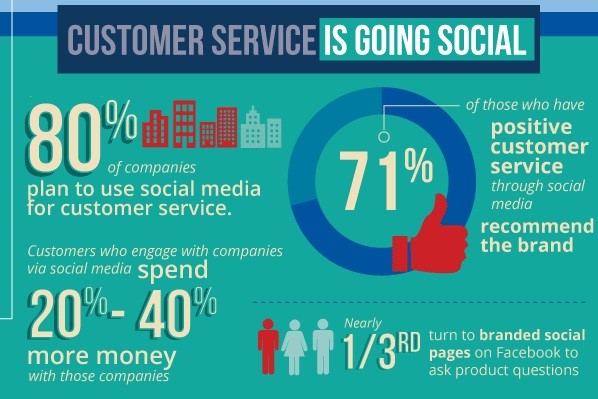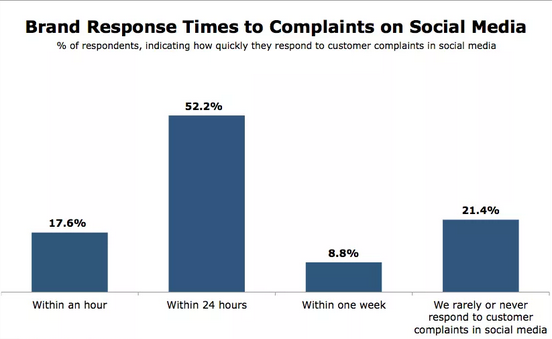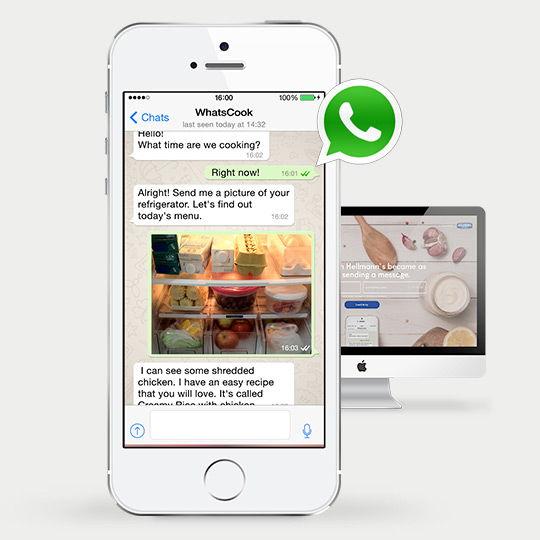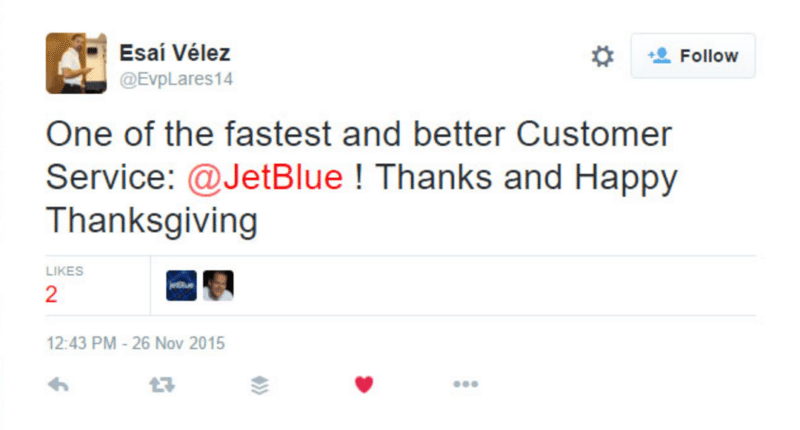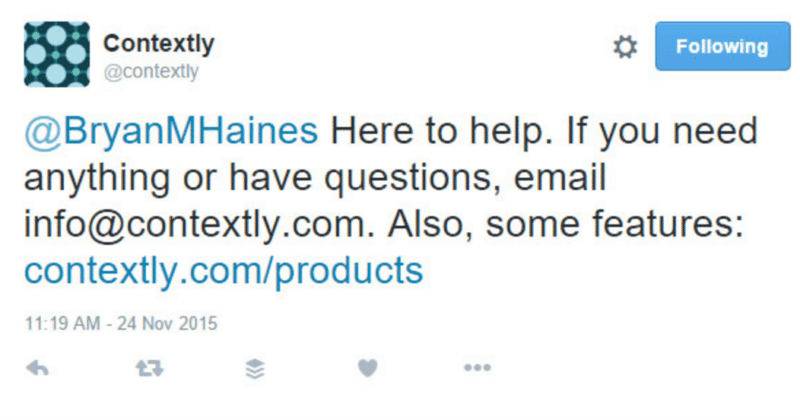The Ultimate Guide to Social Media Customer Service
- March 16, 2017
- 20 mins read
- Listen

Table of Content
Social media is the new wave in forward-thinking customer service. Social media for customer service has gained significant importance with the advent of digital channels of customer communication.
Customers can interact with their favorite brands and get prompt responses to their queries or complaints with the help of social media platforms. 67% of consumers have engaged in a brand’s social media for customer service needs.
Social media customer care is a mixture of art and science. The art is that it is not just to tune down the dissatisfaction of customers for whatever went wrong. The science part is that it is a marketing channel that can attract new clients and make the existing ones come back again and again.
Hence, following social media customer support best practices is crucial for delighting customers, which eventually pays off by increasing retention and their lifetime value (LTV) significantly.
What is Social Media Customer Service?
Social media customer support refers to the practice of using tools to resolve customer concerns and offering prompt customer support via channels such as Facebook, LinkedIn, Twitter, or WhatsApp.
Customer service on social media is considered to be is highly effective because it allows customers to reach your team on the platforms they already use. Over 34.5% of customers said they preferred social media over reactive support channels like phone and email.
Social media customer care is usually sought after because it is so immediate and accessible, which is why 90% of consumers have used social media in some way to communicate with a brand.
Importance of Social Media Customer Service for Businesses
Developing relations with customers via social media and the way these channels are managed is a vital component for business success. Social Media can positively impact sales conversions and, to a large extent, brand loyalty and connection.
Key ways how efforts towards social media customer support can be enhanced:
- Proactive customer support: With the help of social media for customer care, you can provide immediate assistance to queries or complaints and deliver a great customer service experience.
- Improve brand credibility: Social media plays an important role in shaping your brand reputation. It is an important source by which customers encounter brands and their messages.
- Positive word of mouth: 71% of consumers who have had a good social media service experience with a brand are likely to recommend it to others. Happy customers are the best brand advocates as they share their positive experiences with your brand.
- Social media listening: Social listening is all about how you engage with your customers. Regular listening allows your brand to monitor, respond, and further engage with your customers across social channels to improve customer service.
Social Media Customer Service: Best Practices & Strategy
Before you start, you need to prepare a detailed social media customer service plan that will help you to engage with your customers in the right way. Businesses that focus on social media customer care strategy are able to expand their brand presence with more loyal customers.
Let us find out if you are using it in a fair way for your business.
We have narrowed down top 10 strategies to deliver excellent customer service on social media channels.
- Be prompt with your responses
- Measure your social media conversations
- Follow social media listening
- Keep the tone conversational
- Look for opportunities in customer feedback
- Expand your branding with social media
- Messaging apps are the future of social media customer support
- Handle negative comments positively on social media
- Streamline your social media customer service process
- Social media is all about visual engagement
Let us dive in to a comprehensive discussion on social media customer care strategies.
1. Be Prompt With Your Responses
Delay in the customer service response creates a negative experience that ends up with an increase in client complaints and spreads negative word of mouth, which impacts the brand’s face value.
Integrating social media into your omnichannel support strategy creates massive benefits for both you and your customers. The biggest advantage of social media for customer service is instant support that delights your customers.
Seamlessly transitioning between social platforms and your other channels, such as your customer service center or website, can increase customer satisfaction and engagement.
Unlike reactive channels like phone or email, social media delivers proactive support. 42% of consumers expect a response on social media within 60 minutes.
The below chart shows how quickly social media responds to customers’ queries and complaints, unlike other support channels.
The important social media customer care platforms opted by businesses are:
Facebook for social media customer service
Facebook is the topmost social channel so it’s likely to be the first line of contact for your customers, for both compliments & complaints. Replying to your followers, owning up to your mistakes, and keeping customers in the loop can go a long way to building trust & credibility.
You can deploy programmable messenger bots to monitor your social accounts 24×7 and use customizable away messages for off-hours that allow other effective options for providing customer service on Facebook.
Twitter for social media customer service
Customers take Twitter to handle to share their reviews, frustrations, and quickly connect with brands. It pays off to respond to social media customer service requests in real time. When a customer tweets at a business and receives a response, they are willing to spend 3 – 20% more on an average-priced item from that business in the future.
Having a concrete Twitter social customer service strategy is a must-have for customer-centric brands. You can excel your customer support on Twitter by a simple process: listen – appreciate – resolve.
2. Measure Your Social Media Conversations
If you as a business are using social media, hopefully, you must be measuring it right?
But how do you know if your social media marketing plan is working or not? Wondering how best to report on your efforts?
Measuring social conversations on a regular basis can help you to understand customer experience (positive & negative) with your brand and identify the trends customers are showing interest in.
The social interactions differ from one business to another. But like any other customer service channel, social media also needs to put time and resources. Hence, measuring how your customers are satisfied and your team performance is crucial.
Here are some key KPIs & metrics that help to measure social media customer service conversations.
- Response time: This metric helps you to understand & measure the effectiveness of your team in handling customer queries.
- Total resolved & pending conversations: With this KPI, you can know how efficiently the customer’s queries are resolved by your team.
- Net promoter score (NPS): NPS survey helps you to gain an understanding of how your support service is perceived by your customers.
Pro tip: You should only focus on the social media KPIs that are most relevant to the platforms your brand is active on and that have the most relevance to your customer behavior.
3. Follow Social Media Listening
“Proactive listening is one of the most underutilized aspects of social media today, and probably the most powerful.”
Social media listening is about analyzing the brand conversations happening around your industry and using the insights for better business decisions. It helps to understand why, how, and where these conversations are happening, and what customers think when they are mentioning your brand.
Every social media comment should be immediately acknowledged. This is one of the customer service tips for social media that should be followed by brands.
The customer comments can be viewed publicly, businesses have an incentive to be attentive to everybody via social media. Not replying means you are ignoring the customers. Just like businesses value customers they should value their feedback and comments.
Here is how to streamline your social media customer support process.
- Prepare preset answers for common customers’ queries for social network moderation.
- Email replies are more words so they should be written in a way that is not misunderstood.
- Customers love personal attention so send personalized replies based on the case.
4. Keep Your Tone Conversational
Social media allows brands to become more conversational and approachable. A friendly jovial tone and humor can humanize brands, and this gives companies new ways to connect.
84% of millennials don’t rely on traditional advertising. It means brands have to get creative in attracting their attention. Friendliness and trustworthiness are highly valued by the customers. And tone has a big impact on how trustworthy a brand appeared.
An excellent example of social media customer service
LaCroix has soared to the forefront of online savvy brands. Its tone is a lot like its product bubbly, and that goes a long way in building personality and connecting with readers or social media followers.
LaCroix used short and concise phrases to relay its brand personality. The more the tone of voice emphasizes these qualities, the more customers associate LaCroix with social settings, friends, and recreation.
Training and knowledge about customer service etiquette can help to start conversations in the right direction. It definitely creates accountability from both sides. Social media voices can be educational, sophisticated, fun, or helpful. So, how do you find your brand’s voice?
The three key elements for maintaining a conversational tone in social media are as follows.
- Culture: The core of your brand’s voice must come from its culture as every business has something that makes it unique. What do you stand for? What makes you stand out? This is the personality of your business.
- Community: Having a social media voice lets your community help you to know what to expect when they interact with you. Find out their problems and concerns. Listen to the way they voice their feelings.
- Conversation: Determine what you are bringing to social media by putting your brand out there and then communicate it with personality and authenticity
5. Look for Opportunities in Customer Feedback
Receiving customer complaints and feedback is an open invitation to improve your brand reputation and client relationships. Every customer expects to be heard and valued.
By responding promptly to all the feedback and queries, you not only make them happy but also make the best use of it for improving your brand as a whole.
Few tips for the customer service reps to proactively engage customers.
- Respond even if the user has not directly tweeted at you or asked for help. When you answer brand mentions or comments it shows you are paying attention.
- Promote your customers by retweeting a happily resolved support interaction. It is like giving your customers a big thank you.
- Give your customer service team a public face. Use a team photo or an agent spotlight. It’s nice to connect the face of the brand with the names behind it.
- Try to follow-up a resolved interaction with, “How is everything?”
Note: Social media lets you engage your customers directly. When your customers have some feedback or complaints they can interact directly with your team.
6. Expand your Branding with Social Media
Branding is an important part of any business to prevail in the long term. And the purpose of social media is to boost brand awareness. Social media customer service strategy should be the first priority for enhancing business image and rapport.
Social media branding refers to using the right ways to engage and deliver customer care across social platforms. Social channels help to differentiate your brand positioning and show your customers that you are easily approachable.
Wayfair, an online retailer is an excellent example of social media for customer service. It is known for selling affordable furniture and home goods. As a large group of the audience was active on their Instagram, the big challenge for them was getting followers to go from looking at a picture to going to their website and making a purchase.
How social media helps businesses to create branding impact?
- Sustainability – Social media is the best platform that can help your business to match the level of competition. With social media customer service best practices, you can boost your brand reputation at minimal costs.
- Acquire customers – With the right use of hashtags & keywords, businesses can easily identify the interested customers who can be easily converted into potential users so that you can convince them for the sign-up process.
- Develops a social network – Creating a strong social network helps your business to develop a social environment. The customers are easily notified and informed about your brand, product, and services.
7. Messaging Apps are the Future of Social Media Customer Support
Best messaging apps for customer support like WhatsApp, Apple Business Chat, have now become an integral part of customer service. Customers around the world overwhelmingly say they trust businesses more when they can message them.
WhatsApp has become one of the popular channels for customer service globally. It has more than 1.5 billion monthly active users, sharing more than 60 billion messages per day, a huge amount of on-platform activity.
WhatsApp has launched its Business app, which enables businesses to “interact with customers easily by using tools to automate, sort, and quickly respond to messages”.
Hellman is another good example of social media customer service best practices. Hellman wanted more Brazilians to cook with their mayonnaise and they thought of a campaign using WhatsApp.
The campaign gave people the option to connect with a real chef through WhatsApp. When the chef got in touch, they clicked a picture of their fridge and sent it. The chef would plan a recipe quickly out of it and cooked the meal together, staying connected through WhatsApp.
8. Handle Negative Comments Positively on Social Media
When a customer posts a negative comment, businesses tend to defend themselves. Always try to meet negative comments positively. A complaint on social media is noticed by every single customer as it appears in their news feed.
A negative comment brings other followers around your business and depending on how likely your business is to be on the receiving end of social media negativity, brainstorming positive responses is vital for your customer service social media strategy.
The most important thing is to show you care and value your customer’s opinion, no matter if it was negative.
Applebee’s is the best example of a social media customer service practice. It is known for its quirky and humorous responses over social media, handled an issue so smartly.
Applebee’s replies to customers’ comments on time, greets customers with their first name, apologizes, and gives a phone number for offline conversation. And it does all these under 280 characters.
9. Streamline Your Social Media Customer Service Process
No matter how hard you try to take your business to new heights, but without social media, it is difficult to reach the goal. 90% of businesses are predicted to leverage the power of social media for better customer service.
Customers prefer connecting with businesses via various social channels. With the help of social media tools, you know how effectively you can use social media for better customer service. Managing all social media conversations over all channels such as Facebook, LinkedIn, Twitter, Instagram is hectic.
Here are the two tools which can help to improve customer care and monitor your audience across all social platforms.
- REVE Chat: REVE Chat is an omnichannel live chat platform that streamlines customer conversations across social channels like Facebook, Viber, Telegram to deliver a unified support experience.
- Brand24: Brand24 is a well-known social media monitoring tool to track and analyze online conversations about brands, products, and competitors. It empowers its users to monitor their online reputation, prevent PR crises, and discover cooperation opportunities.
10. Social Media is All About Visual Engagement
Social media is a continuous engagement process that plays a vital role in customer communication. 32% of marketers say visual images are the most important form of content for their business.
Using visual content obviously increases brand awareness. Visual content is more appealing and engaging to the social media audience. You can create your own visuals from scratch or generate images with AI and post them on social media
Businesses use social media to tailor their messages and promote their offers by posting content on social media networks. As a matter of fact, 140 million tweets are generated and over two million videos get uploaded to social media every day.
In order to connect emotionally with your customers, you have many options that can be used such as:
- Videos, Memes, Images
- Sneak peek, Behind the scenes
Visual content can help customers to connect with your brand and visuals convey and connect more quickly than simple content.
Social Media Customer Service Examples
Knowing how important it is to respond immediately to customers (the same being their top expectation from a company), many businesses have ignored it, while many others have wisely focused on social media customer care.
The stakes are high when just one bad experience can cost you a loyal customer. How do you leverage the power of social media to create exceptional social media customer service experiences?
Start following the awesome social media customer service examples mentioned below:
Social media customer support example #1: Jet Blue (Understanding customer’s pain)
During a four-hour flight, Esaí Vélez’s seatback TV gave him nothing but static, while the rest of the passengers had normally functioning screens. How did he respond? He tweeted a complaint to JetBlue. Nothing was inflammatory, but he was clearly disappointed.
How did JetBlue respond? While they could have made an excuse or even ignored his tweet, they didn’t. They took his side and empathized with him.
“Oh no! That’s not what we like to hear! Are all the TVs out on the plane, or is it just yours?”
After he confirmed that it was just his TV that was out, they responded:
“We always hate it when that happens. Send us a DM with your confirmation code to get you a credit for the non-working TV.”
Not only do they imagine his frustration, but they also offer him credit for his trouble.
Key Takeaway: Put yourself in your customer’s shoes when responding to complaints.
Social media customer support example #2: Context (customer onboarding)
The onboarding process offered by the Context app is so smooth that it can be understood better from the tweet.
And how they responded with a positive, helpful tweet.
Key Takeaway: Use social media to streamline customer onboarding.
Social media customer support example #3: Nike (Respond politely to confused customers.)
Nike Support is one of the strongest customer service accounts on Twitter. They feature a dedicated Twitter account, support seven days a week, and are available in seven languages.
When a customer contacted Nike support to ask for help finding an order number, Although the question was unclear, Nike’s customer support made the customer feel cared for.
And when the customer realized they had the information all along, their response is super supportive.
Key Takeaway: Be kind, even when it’s not your fault.
Social Media Customer Service Software
Social platforms like Facebook, Twitter, and Instagram provide a useful two-way communication channel with your customers. But it’s up to you as a company to have the right system in place to monitor, address, and optimize every social interaction a customer has with your brand.
Employing social media customer service software is how successful companies can provide outstanding customer support on social media and incorporate it seamlessly into their broader customer service strategy.
Research has shown that using social media as a customer service tool can significantly impact your bottom line; in fact, 88% of customers say they are less likely to purchase from a company that doesn’t offer customer service support via social media channels.
To help better communicate with your customers, social media customer service tools are beneficial to help you manage inquiries, comments, and issues raised on social media. Customer service tools for social media incorporate valuable consumer insights into your customer service solutions. It notifies your support team of the issues raised across social media platforms so that they can be resolved efficiently.
There are several ways in which social media customer service software can help your overall customer service solutions:
#1. Analytics
Social media customer service software can help by providing advanced analytics and insights into what your customers are saying about your company or brand online. It helps to understand customers, demographics, and their pain points and then address them.
#2. Chatbot
Chatbots can be useful because they offer your customers instant online support. They help you demonstrate responsiveness to your customers by providing immediate answers to their frequently-asked questions and issues.
#3. Social Scheduling & Pulishing
Social media customer support tools also include a publishing tool, where you can schedule social media messages to publish at a specific time. This is helpful when you’re crafting a solid social media strategy ahead of time to engage with your customers.
Social Media Customer Service Stats
With more and more businesses now using social media to connect with their customers, social media websites have become the most preferred platform for providing customer support. Social media websites now play an important role in developing the overall customer support strategy, as more than 80% of consumers are now using social media to engage with brands.
Check out the latest social media customer support statistics and trends:
- 67% of consumers have used a company’s social media channel for customer service. J.D. Power
- If you don’t respond to comments on social media, it can lead to a 15% increase in churn rate. Gartner
- 51.7% of consumers expect businesses to respond to their negative review within seven days. Review Trackers
- Handling customer service requests via social media channels is up to 12 times cheaper than handling the same requests by phone. BrandWatch.com
- 42% of people that have social media use it to research products. Data Reportal.com
- 94% of consumers say an online review has convinced them to avoid a business. Review Trackers
REVE Chat for Improving Your Customer Service on Social Media
REVE Chat is an omnichannel customer communication platform that provides real-time sales and support assistance with AI-powered chatbots to automate chats along with human touch. With REVE Chat, offer support to your visitors and customers across the website, social, mobile, and messaging apps.
You can engage with customers across all the popular messaging platforms, like Facebook, Twitter, LinkedIn, and Instagram. The dashboard helps to interact with your social customers and address their concerns in real time.
You can implement REVE Chat to help strengthen your social media customer service strategy, deliver a long-lasting experience to your customers, and improve brand credibility.
Final thoughts on social media customer service
Social media for customer care is the future of business-customer interactions. It plays a vital role in customer service strategy and results in brand success, followed by loyalty and advocacy. With the right planning and execution of the strategy, your digital community can reach a higher level.
Here are the key takeaways for building a great social media customer service strategy:
- Reply to social comments promptly
- Measure and monitor customer service via social media tools
- Maintain your social tone for the social audience
- Respond to both positive and negative comments

